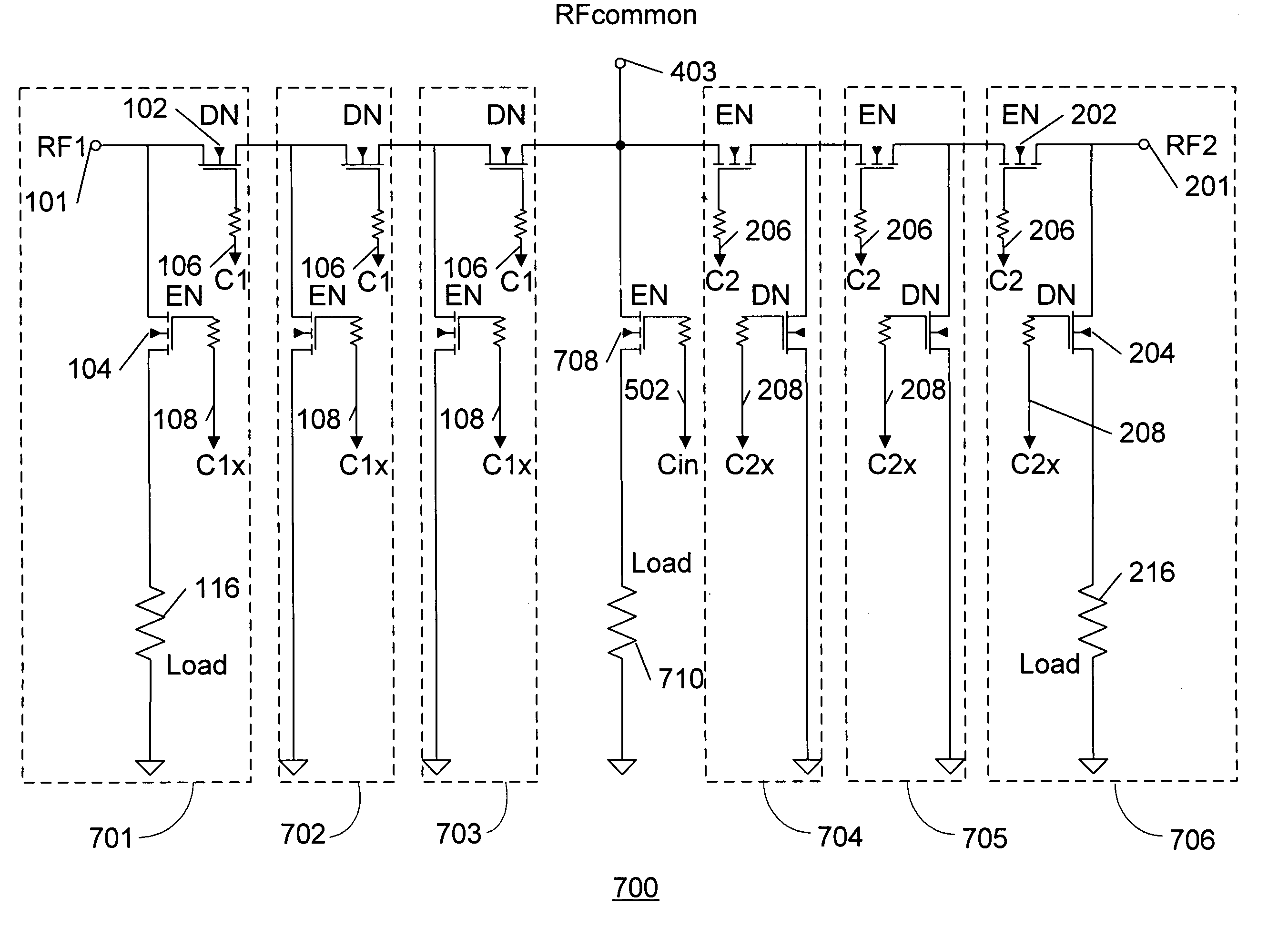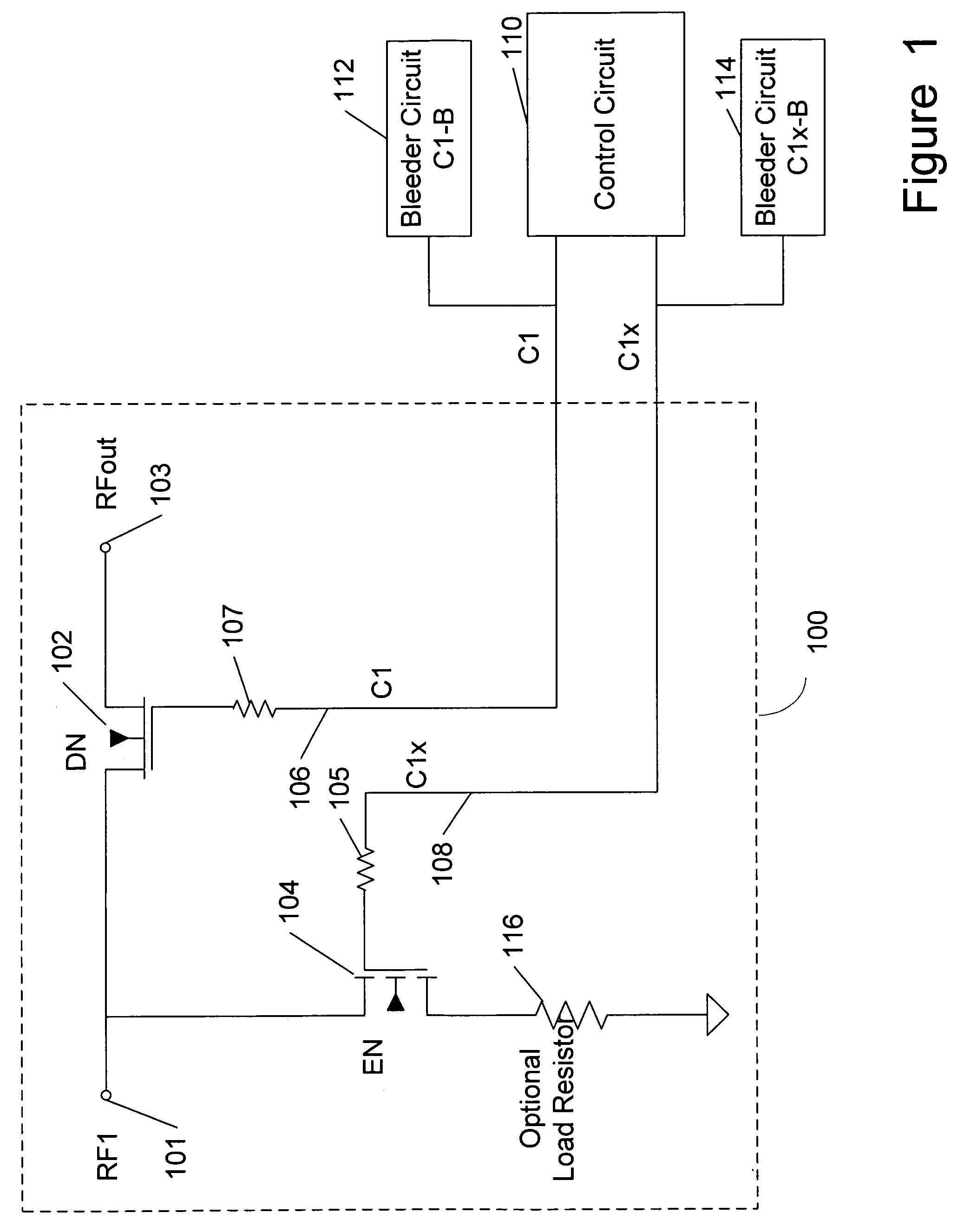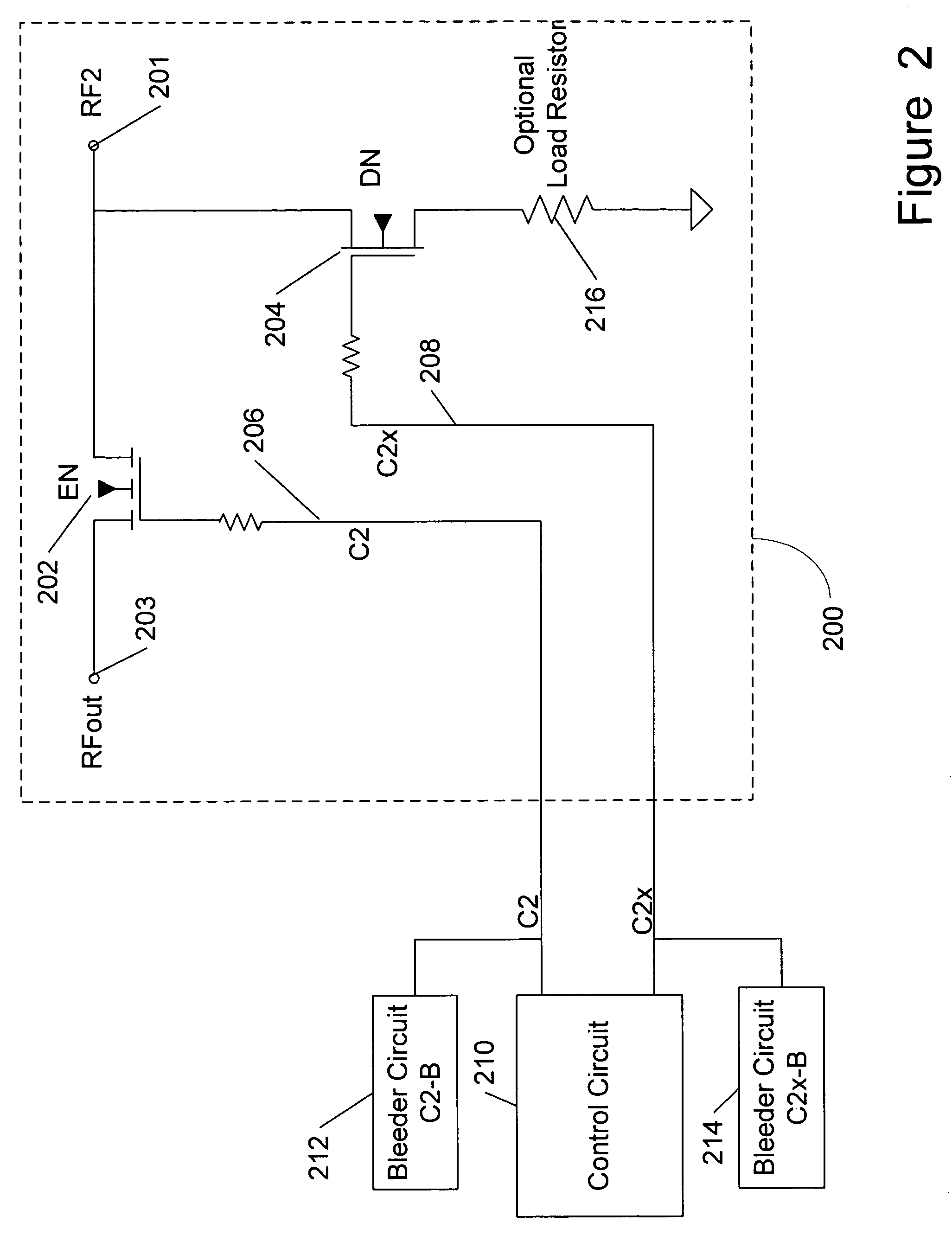Unpowered switch and bleeder circuit
a bleeder circuit and switch technology, applied in the field of switches, can solve the problems of unpowered solid-state switches, unpowered rf switches capable of unpowered operation using integrated circuits, unpowered solid-state switches including non-linear elements, and rectification of rf signals, so as to improve switch isolation and linearity, improve the effect of voltage and improve the voltag
- Summary
- Abstract
- Description
- Claims
- Application Information
AI Technical Summary
Benefits of technology
Problems solved by technology
Method used
Image
Examples
first embodiment
of a Single-Pole Double-Throw RF Switch
[0065]FIG. 4 schematically illustrates a first embodiment of a single-pole, double-throw (SPDT) RF switch 400 in accordance with the present teachings. In the embodiment shown, the SPDT RF switch 400 includes a D-E RF switch 401 and an E-D RF switch 402. The D-E RF switch 401 is similar to the D-E RF switch 100 described above with reference to the FIG. 1, except that the RF output signal is conveyed to the RF common node 403. Likewise, the E-D RF switch 402 is similar in design to the E-D RF switch 200 described above with reference to FIG. 2, except that the RF output signal is also conveyed to the RF common node 403.
[0066]Referring now to FIG. 5, a control circuit 510 and bleeder circuits 512, 112, 114, 212 and 214 are shown. The control circuit 510 is coupled to provide control voltages to the control lines 502, 106, 108, 206 and 208. The bleeder circuits 512, 112, 114, 212 and 214 are operatively coupled to the control lines 502, 106, 108,...
second embodiment
of a Single-Pole Double-Throw RF Switch
[0070]FIG. 6 schematically illustrates a second embodiment of a single-pole, double-throw (SPDT) RF switch 600 in accordance with the present teachings. The SPDT RF switch 600 includes a first E-D RF switch 601 and a second E-D RF switch 602. The first and second E-D RF switches 601 and 602 are similar to the E-D RF switch 200 described above with reference to FIG. 2, except that the RF output signals are applied to the RF common node 403 in the switch shown in FIG. 6.
[0071]The control voltages provided by the control circuit 510 (FIG. 5) (i.e., control signals C1, C1x, C2 and C2x, respectively) may be conveyed via the control lines 106, 108, 206 and 208 to like control lines 106, 108, 206 and 208, respectively, shown in the FIG. 6, as described above. The control lines 106, 108, 206 and 208 are also coupled to the bleeder circuits 112, 114, 212 and 214, respectively, as shown in FIG. 5.
[0072]For the POWERED-STATE, the SPDT RF switch 600 switch...
PUM
 Login to View More
Login to View More Abstract
Description
Claims
Application Information
 Login to View More
Login to View More - R&D
- Intellectual Property
- Life Sciences
- Materials
- Tech Scout
- Unparalleled Data Quality
- Higher Quality Content
- 60% Fewer Hallucinations
Browse by: Latest US Patents, China's latest patents, Technical Efficacy Thesaurus, Application Domain, Technology Topic, Popular Technical Reports.
© 2025 PatSnap. All rights reserved.Legal|Privacy policy|Modern Slavery Act Transparency Statement|Sitemap|About US| Contact US: help@patsnap.com



